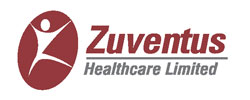A Trademark Assignment is a formal written document that empowers the registered proprietor of a
trademark to transfer ownership of the trademark and to provide valid receipts for any consideration
received during the assignment. The assignor, who holds the trademark, transfers a registered word,
phrase, symbol, or design to another entity. Trademark assignments occur when the owner's rights, title,
and interest in the trademark are transferred to another party.
In summary, the assignment and transmission of a trademark involve transferring ownership from one
individual to another, either with full or partial rights, depending on the terms agreed upon by the
trademark owner. Both registered and unregistered trademarks can be assigned or transmitted with or
without the associated goodwill of the business. The process is typically formalized through a trademark
assignment agreement.
There are several ways to assign a trademark:
- Complete Assignment: This involves transferring all rights to the trademark,
including rights to royalties, future transfers, and other associated benefits, from one party
to another.
- Partial Assignment: Ownership is transferred, but it is limited to specific
products or services, rather than the entire scope of the trademark.
- Assignment with Goodwill: The trademark, along with all associated rights and
business values, is transferred to the new owner.
- Assignment without Goodwill: The trademark is transferred in a manner that allows
it to be used for purposes other than the original business.
In this process, the current owner or transferring party is referred to as the "Assignor," while the
future owner or receiving party is known as the "Assignee."
Note: An unregistered trademark can also be assigned, either
with or without the goodwill of the business associated with it.
Benefits of Trademark Assignment?
Designing and marketing a trademark can be resource-intensive, often straining a company's budget. As a
result, many businesses opt to assign their trademark, thereby legalizing the transfer of intellectual
property. Trademark assignment offers several benefits, which are outlined below:
- Monetization of the Brand: Trademark assignment allows you to capitalize on the
value of your brand, enabling you to reap the rewards of the time and investments made in its
creation.
- Simplified Brand Building: For the assignee, acquiring an established trademark
eliminates the need to invest in building a brand from scratch.
- Intellectual Property Maintenance: Assigning a trademark helps ensure the ongoing
maintenance of intellectual property rights by facilitating the proper registration and transfer
of ownership.
- Realization of Trademark Value: Trademark assignment enables the original owner to
realize the monetary value of their brand, which required significant investment, time, and
effort to build.
- Valid Legal Proof: In the event of a dispute, a trademark assignment agreement
serves as valid proof of the transfer, protecting the legal rights of both parties.
- Access to Established Benefits: The assignee gains the advantage of operating under
an already recognized and established trademark, which can provide a head start in the market.
- Business Expansion: Trademark assignment can facilitate business growth by enabling
entry into similar markets within the industry.
Documents Required for the Trademark Assignment?
 Trademark
Registration Certificate
Trademark
Registration Certificate
 Identity and Address
Proofs
Identity and Address
Proofs
 NOC from the Original
Owner
NOC from the Original
Owner
 Details of the
Assignment
Details of the
Assignment
 Advertisement Copy
with Registrar's Direction
Advertisement Copy
with Registrar's Direction
 Signatories and
Witnesses
Signatories and
Witnesses
 Notarization
Notarization
 Proof of Execution
Proof of Execution
 Power of Attorney
Power of Attorney
Restrictions on Assignment of a Trademark?
When applying for a Trademark Assignment, certain restrictions must be considered, including:
- Restriction on Assignments Creating Multiple Exclusive Rights: An assignment cannot
result in the creation of multiple exclusive rights for the same trademark, as this could lead
to conflicting ownership.
- Restriction on Assignments Creating Regional Exclusive Rights: An assignment cannot
establish exclusive rights for the same trademark in different regions of India, as this may
lead to territorial conflicts and confusion.
Procedure for Trademark Assignment:
- Submit the Application
The first step in the Trademark Assignment process is
to submit an application. This can be done by the assignor, the assignee, or both parties
together.
- Submission of Required Forms and Documents
The applicant must provide all
necessary details of the transfer, along with certified copies of relevant documents, by filing
Form TM-P.
- Filing with the Registrar
Once the application is complete, it must be filed
with the Registrar of Trademarks within three months of acquiring proprietorship. The Registrar
may take one of the following actions:
- Notify the applicant of the assignment, or
- Request additional proof if there are any doubts or errors in the submission.
- Direction from the Registrar
If the assignment involves the transfer of
goodwill, it is mandatory to receive direction from the Registrar within three months. This
period can be extended if necessary.
- Advertisement
The applicant is required to publish an advertisement as per the
Registrar's specifications. A copy of the advertisement, along with the Registrar's direction,
must be submitted.
Note: The assignee's name will be recorded as the new proprietor
in the trademark register, and they can use the trademark according to the terms outlined in the
Trademark Assignment Agreement.
What are the Penalties for Non-Compliance with a Trademark Registration?
If an individual falsely represents an unregistered trademark as registered in connection with any
products or services, they are subject to legal penalties. By law, this offense is punishable by
imprisonment for a term of up to three years, a fine, or both.
What You Know About Trademark Assignments of Unregistered/Registered Trademark?
- Assignment of Unregistered Trademarks
According to Section 39, an unregistered trademark can be assigned either with or without the
goodwill associated with the business.
- Assignment of Registered Trademarks
A registered trademark can be assigned in full or in part, with or without the goodwill of the
business, to another entity.
Key Aspects to Include in a Trademark Assignment Agreement:
A comprehensive Trademark Assignment Agreement should address the following key details:
- Identification of the Parties: Clearly specify the current owner of the trademark (assignor) and the new owner (assignee).
- Details of the Trademark: Describe the trademark being assigned, including any relevant registration information.
- Dispute Resolution: Outline where and how disputes will be handled in case any issues arise during or after the assignment.
- Rights of the Assignor: Explain the assignor's authority to transfer the trademark and any associated goodwill.
- Effective Date: Define the date when the trademark is officially transferred to the assignee.
- Consideration: Specify the amount the assignee will pay to the assignor for the assignment.
Why Choose SeaRoot for Trademark?
SeaRoot is your ideal partner for trademark assignments due to our extensive expertise and experience in the field. We offer comprehensive services, managing every aspect of the assignment process with precision and compliance. Our team provides expert legal guidance to navigate complex trademark laws, ensuring all legal requirements are met. With a focus on efficiency and accuracy, we minimize delays and reduce the risk of errors, ensuring a smooth and timely transition. We also offer customized solutions tailored to your specific business needs, whether for registered or unregistered trademarks. Additionally, SeaRoot provides ongoing support throughout the assignment process and beyond, addressing any post-assignment issues that may arise. Choose SeaRoot for a seamless and legally sound trademark assignment experience.
Frequently Asked Questions
1.What is a trademark assignment?

A trademark assignment is the legal transfer of ownership of a trademark from one party (the assignor) to another (the assignee). This can involve transferring the trademark with or without the associated goodwill of the business.
2.Can an unregistered trademark be assigned?

Yes, an unregistered trademark can be assigned with or without the goodwill of the business, as stipulated by Section 39.
3.What documents are required for a trademark assignment?

Essential documents include the trademark registration certificate, identity and address proofs of both parties, a No Objection Certificate from the original owner (if applicable), a description of the assignment, advertisement copies, and notarized signatures.
4.How long does the trademark assignment process take?

The process typically takes several months, depending on the completeness of the application and the Registrar's workload. It involves filing the assignment application, obtaining Registrar's direction (if needed), and making necessary advertisements.
5.What are the penalties for misrepresenting a trademark?

Falsely representing an unregistered trademark as registered can lead to legal penalties, including imprisonment for up to three years, a fine, or both.
6.What should be included in a trademark assignment agreement?

The agreement should cover the identities of the assignor and assignee, details of the trademark and its registration, dispute resolution procedures, the assignor's authority, the effective date of transfer, and the payment amount.










